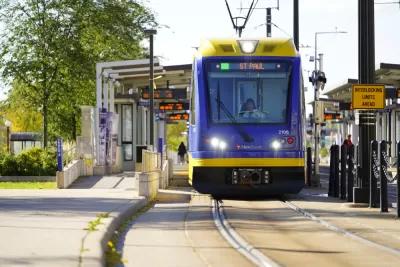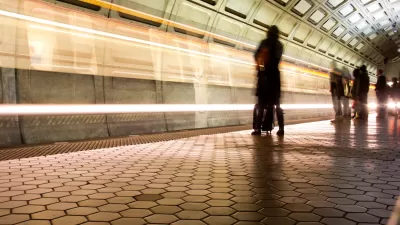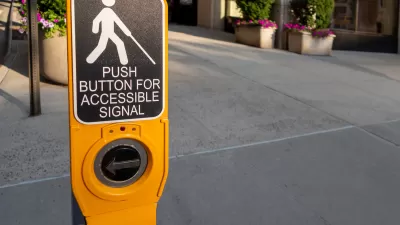Just 8 percent of U.S. households live near “high-quality transit.” How can federal infrastructure spending help fill this gap?

The Urban Institute’s Yonah Freemark assesses the potential of transit funding allocated in the Infrastructure Investment and Jobs Act (IIJA), which could help agencies bring public transit to more than the 8 percent of U.S. households that currently live near “high-quality transit.”
Freemark’s research on transit accessibility found that this percentage grew from a low of 5 percent in the 1990s, but that U.S. accessibility is far below that of other countries such as Canada, England, or France. “That’s one reason the average resident of France and the United Kingdom takes almost four times as many (PDF) transit trips annually as the average US resident,” Freemark explains.
Freemark describes planned transit projects in Minneapolis and Seattle, the cities with the most robust plans for their IIJA dollars. “When selecting projects for funding from IIJA, US Department of Transportation officials could consider how much investments may increase transit access to a higher share of the population, especially if those projects can improve accessibility to employment and other needs for people of color and residents with low incomes.” Freemark also advises linking transit plans with land use policy reform that encourages transit-oriented development (TOD) and investing in areas with high population density and poor transit access.
FULL STORY: Federal Infrastructure Funds Could Fill Gaps in Local Transit Accessibility

Alabama: Trump Terminates Settlements for Black Communities Harmed By Raw Sewage
Trump deemed the landmark civil rights agreement “illegal DEI and environmental justice policy.”

Planetizen Federal Action Tracker
A weekly monitor of how Trump’s orders and actions are impacting planners and planning in America.

The 120 Year Old Tiny Home Villages That Sheltered San Francisco’s Earthquake Refugees
More than a century ago, San Francisco mobilized to house thousands of residents displaced by the 1906 earthquake. Could their strategy offer a model for the present?

In Both Crashes and Crime, Public Transportation is Far Safer than Driving
Contrary to popular assumptions, public transportation has far lower crash and crime rates than automobile travel. For safer communities, improve and encourage transit travel.

Report: Zoning Reforms Should Complement Nashville’s Ambitious Transit Plan
Without reform, restrictive zoning codes will limit the impact of the city’s planned transit expansion and could exclude some of the residents who depend on transit the most.

Judge Orders Release of Frozen IRA, IIJA Funding
The decision is a victory for environmental groups who charged that freezing funds for critical infrastructure and disaster response programs caused “real and irreparable harm” to communities.
Urban Design for Planners 1: Software Tools
This six-course series explores essential urban design concepts using open source software and equips planners with the tools they need to participate fully in the urban design process.
Planning for Universal Design
Learn the tools for implementing Universal Design in planning regulations.
Clanton & Associates, Inc.
Jessamine County Fiscal Court
Institute for Housing and Urban Development Studies (IHS)
City of Grandview
Harvard GSD Executive Education
Toledo-Lucas County Plan Commissions
Salt Lake City
NYU Wagner Graduate School of Public Service





























